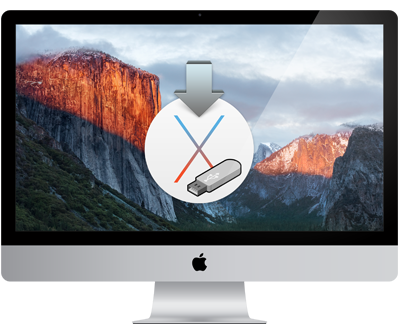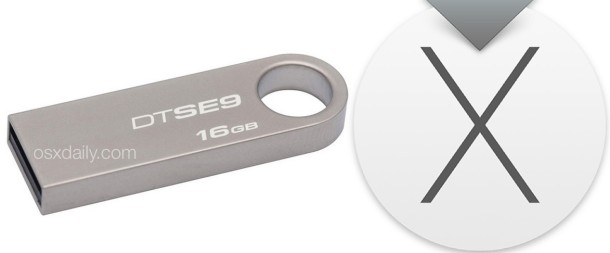El Capitan To Usb


The El Capitan DMG installer file, now available for download under the version of 10.11.6 for Mac OSX. Now the dmg file can be downloaded by any Mac device users. The Dmg file is known as the latest ISO regarding El Capitan operating system. When talking about the El Capitan OS X, this is the advanced OS, which has been released for the Mac. Download El Capitan.DMG from here. Download DiskMaker X. To do in Windows, we already shared a very specific instruction from here: Make Bootable Installation USB from Mac OS X.DMG on Windows PC. At for Mac users, there will be 2 doable methods. METHOD 1: Using DiskMaker X. Run, DiskMaker X, then.choose El Capitan (10.11). If you wanna create bootable USB flash drive for Mac OS X El Capitan on Windows PC. You need a TransMac Software. That’s not a problem if you use a computer that supports legacy or UEFI. Just you need TransMac and El Capitan dmg file. Siddharth choubisa September 20, 2016 at 3:43 PM. Create Bootable USB for Mac OS X El Capitan with TransMac. How To Create Bootable Usb For Os X El Capitan Download. A new pop up box will appear, click on the three-dots, and then select the macOS X El Capitan.DMG file from Windows. Then click on OK. Since the file is huge so it will take quite time to complete. Anydesk free download for. Bootable USB Installers for OS X Mavericks, Yosemite, El Capitan, and Sierra. First, review this introductory article: Create a bootable installer for macOS. Second, see this How To outline for creating a bootable El Capitan installer. Simply replace the Terminal command with the one from the preceding article by copying it into the Terminal.
Whenever new OS X release comes to Mac users, it is important to create a Bootable USB as a backup option to clean install. Most of the time upgrade works well, but there are chances your battery performance go poor or OS X corrupt due to apps installed on the computer. That is when we need to perform Clean Installation of OS X as the final troubleshooting method.
Download OS X El Capitan only from Mac App Store which is available right now. Simply launch App Store on your mac computer and you will see El Capitan already featured with free download button.

OS X El Capitan featured with tons of new features and improvements to existing features. I have installed it on my iMac and Macbook Pro, and so far it is great. As i mostly use my macbook pro at desk, didn’t notice any battery performance problems. There are reports from Macbook Pro and Macbook Air users who have upgraded to El Capitan regarding battery issues.
Another important step to do after downloading the OS X El Capitan is taking backup of the installation file. By default the location of the file set to /Applications folder and the file automatically deleted after completing the OS X upgrade. Wineskin mac air. So it is very important for you to take a backup of the file named “Install OS X El Capitan” from “Applications” folder to create bootable USB or use it later.
Go to Applications folder by opening Finder once the download completed and OS X El Capitan installation wizard pop up comes on your desktop screen.
At this point, copy the file “Install OS X El Capitan” and paste it any folder on your hard disk drive. Now you have the copy of latest OS X released by Apple and you can use it whenever you want and share it with your friends saving 6 gigabytes of bandwidth for them.
Create OS X El Capitan Bootable USB
We are now ready to create the bootable usb disk drive of OS X El Capitan. All you have do is, follow the couple of steps suggested here and you are ready to install El Capitan on any mac computers.
Step 1: Connect USB Disk Drive to your mac computer and Open “Disk Utility” by typing it on Spotlight (CMD + Space Bar) or by going to “Applications – Utilities – Disk Utility”.
Step 2: Select the USB Drive from the list and on the Right side, select “Erase” tab and rename the USB drive as “Untitled” and click on Erase to perform the operation.
Step 3: Now the USB Drive is ready for OS X El Capitan installation. Make sure the copy of “Install OS X El Capitan” is there on /Applications folder.
Step 4: Launch “Terminal” and copy, paste the following command in Terminal then press Enter.
Step 5: Terminal will prompt for Root password, enter the root password and press enter. USB Disk formatting will start now followed by the copying of files required to create bootable os x el capitan usb drive.
It will take 5 to 10 minutes maximum and the Bootable USB Disk of OS X El Capitan will be ready for use.
If you don’t want to follow these steps and looking for an app to automate all these tasks and get the USB ready with OS X El Capitan then consider using, DiskMaker X which is compatible with OS X El Capitan as well. Download DiskMaker X 5 which comes around 7 MB and create the bootable usb drive easily.
Thanks for reading, and feel free comment below if you have any queries. Have a wonderful day, and don’t forget to share this post with your friends and followers across Twitter, Facebook and Google+.
It was 2009 when Apple last released a new operating system on physical media. Things have proceeded remarkably smoothly since version 10.7 switched to download-only installers, but there are still good reasons to want an old, reliable USB stick. For instance, if you find yourself doing multiple installs, a USB drive may be faster than multiple downloads (especially if you use a USB 3.0 drive). Or maybe you need a recovery disk for older Macs that don't support the Internet Recovery feature. Whatever the reason, you're in luck, because it's not hard to make one.

As with last year, there are two ways to get it done. There's the super easy way with the graphical user interface and the only slightly less easy way that requires some light Terminal use. Here's what you need to get started.

Copy El Capitan To Usb
- A Mac that you have administrator access to, duh. We've created El Capitan USB stick from both Yosemite and El Capitan, but your experience with other versions may vary.
- An 8GB or larger USB flash drive or an 8GB or larger partition on some other kind of external drive. For newer Macs, use a USB 3.0 drive—it makes things significantly faster.
- The OS X 10.11 El Capitan installer from the Mac App Store in your Applications folder. The installer will delete itself when you install the operating system, but it can be re-downloaded if necessary.
- If you want a GUI, you need the latest version of Diskmaker X app. Version 5 is the one with official El Capitan support.
- Diskmaker X is free to download, but the creator accepts donations if you want to support his efforts.
The easy way
Once you've obtained all of the necessary materials, connect the USB drive to your Mac and run the Diskmaker X app. The app will offer to make installers for OS X 10.9, 10.10, and 10.11, and it should run on OS X versions all the way back to 10.7—support for 10.6 was dropped in the most recent release.
AdvertisementDiskmaker X has actually been around since the days of OS X 10.7 (it was previously known as Lion Diskmaker), and it's still the easiest GUI-based way to go without intimidating newbies. If you're comfortable with the command line, it's still possible to create a disk manually using a Terminal command, which we'll cover momentarily.
Select OS X 10.11 in Diskmaker X, and the app should automatically find the copy you've downloaded to your Applications folder. It will then ask you where you want to copy the files—click 'An 8GB USB thumb drive' if you have a single drive to use or 'Another kind of disk' to use a partition on a larger drive or some other kind of external drive. Choose your disk (or partition) from the list that appears, verify that you'd like to have the disk (or partition) erased, and then wait for the files to copy over. The process is outlined in screenshots above.
Os X El Capitan Installer
The only slightly less-easy way
If you don't want to use Diskmaker X, Apple has actually included a terminal command that can create an install disk for you. Assuming that you have the OS X El Capitan installer in your Applications folder and you have a Mac OS X Extended (Journaled)-formatted USB drive named 'Untitled' mounted on the system, you can create an El Capitan install drive by typing the following command into the Terminal.
sudo /Applications/Install OS X El Capitan.app/Contents/Resources/createinstallmedia --volume /Volumes/Untitled --applicationpath /Applications/Install OS X El Capitan.app --nointeraction
El Capitan Dmg To Usb
The command will erase the disk and copy the install files over. Give it some time, and your volume will soon be loaded up with not just the OS X installer but also an external recovery partition that may come in handy if your hard drive dies and you're away from an Internet connection.
El Capitan To Sierra Upgrade
Whichever method you use, you should be able to boot from your new USB drive either by changing the default Startup Disk in System Preferences or by holding down the Option key at boot and selecting the drive. Once booted, you'll be able to install or upgrade El Capitan as you normally would.